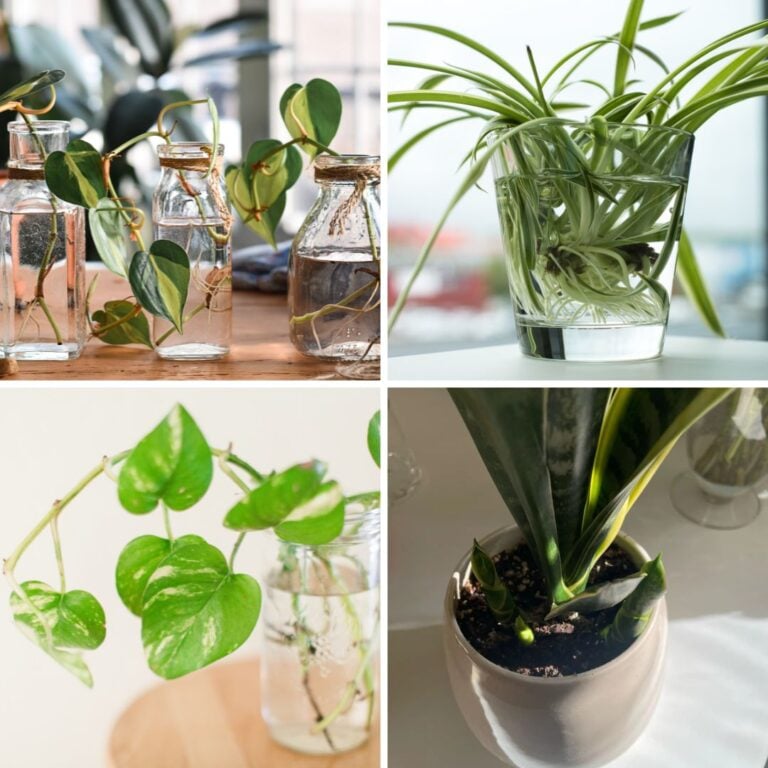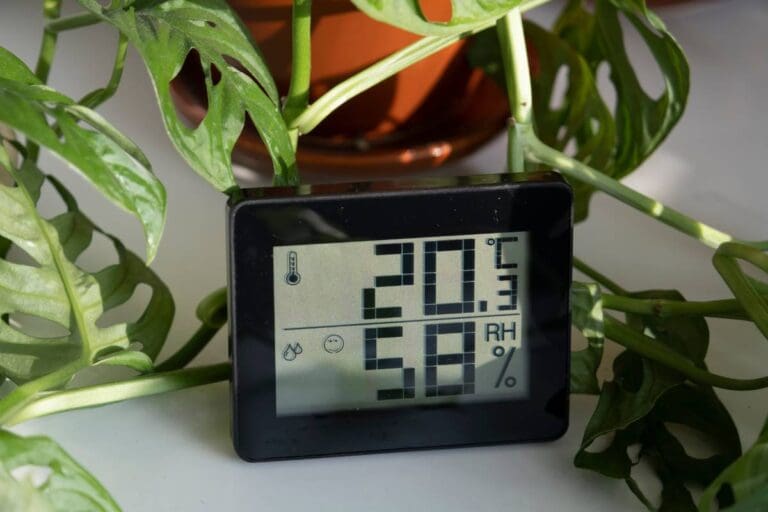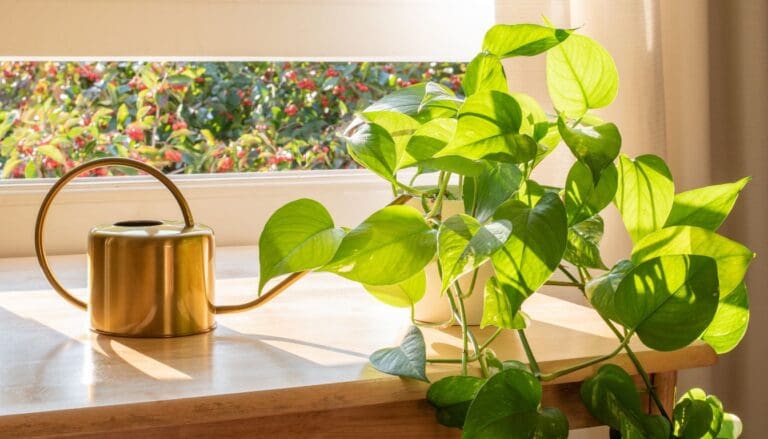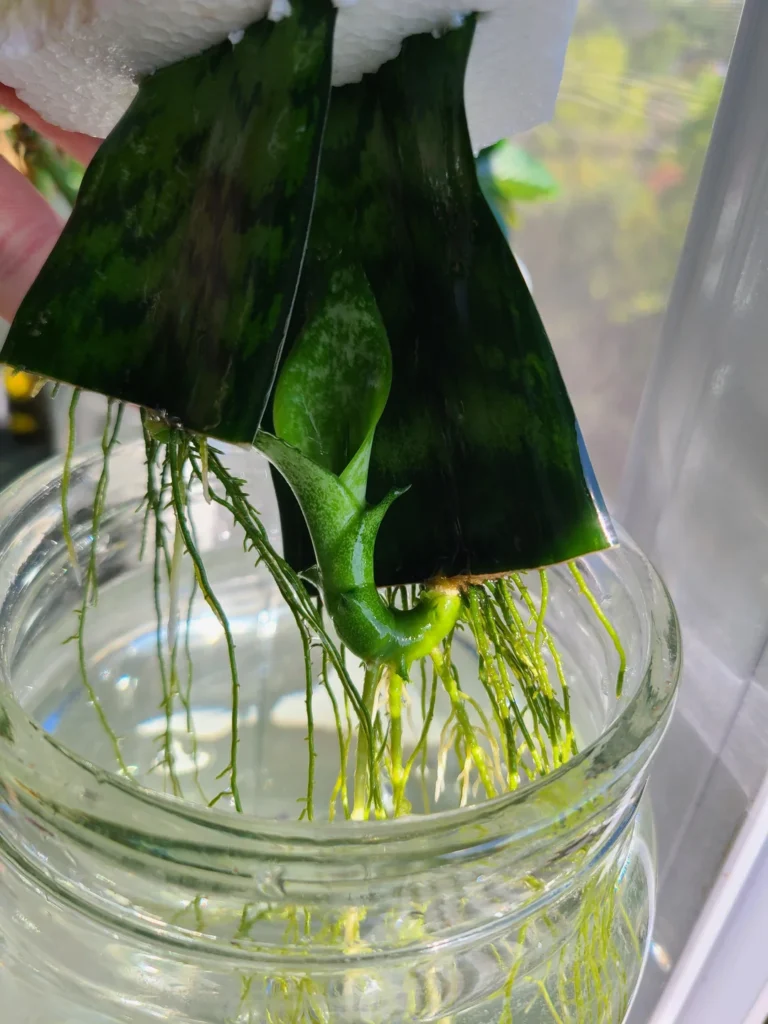10 Tips for Moving Patio Plants Back Inside for Winter
When colder weather rolls in, I can’t help but feel it’s time for my patio plants to head back indoors.
Keeping them healthy during this switch takes a few steps, but honestly, it’s worth it.
I really want to protect my favorite greenery from those chilly nights and help them survive the winter.
Moving them isn’t exactly rocket science, but I’ve learned a little planning goes a long way.
Please note: Simplify Plants is reader-supported. As an Amazon Associate, I earn from qualifying purchases made by our readers with no extra cost added to you all! Some links in the post are affiliate links and I get a commission from purchases made through links in the post.
1) Check weather forecast to avoid frost damage
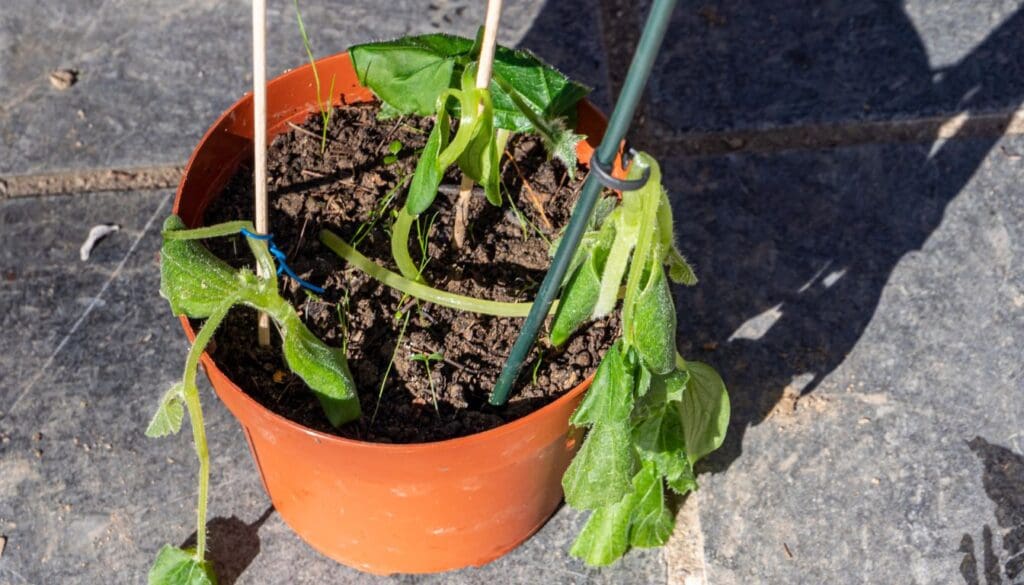
Before I even think about hauling plants inside, I always check the weather forecast. Cold nights seem to sneak up fast in the fall.
If I drag my feet, a sudden frost can do real damage. I keep tabs on the news or just check my phone’s weather app.
When temps start dipping close to freezing, I know it’s go time. Frost can hit even when it’s not technically freezing.
Sometimes, all it takes is a damp night with temps below 40°F and suddenly there’s frost on everything. I try to get my plants in before that happens.
If there’s any frost warning, I move my most sensitive plants first. Some can handle a cool snap, but others wilt at the first sign of frost.
One night out in the cold can turn leaves brown or limp. Once frost hits, it’s hard for plants to recover.
I usually set reminders on my phone as fall approaches. It’s a little thing, but it keeps me from forgetting.
If I’m unsure, I just bring a few plants in—no harm in playing it safe. Even a single cold night can stress out my favorites.
Checking the forecast only takes a minute, and it’s saved me more than once. I’d hate to lose a plant just because I missed a weather update.
Staying alert is just part of my fall routine now. It’s not glamorous, but my plants thank me for it.
2) Gradually reduce outdoor watering

When I’m getting ready to move patio plants inside, I start by cutting back on watering. They’re about to face drier air indoors, so I want to help them adjust.
I water a little less every few days. At first, I just give enough to keep the soil a bit damp.
Over a week or two, I’ll stretch out the time between waterings. This helps the roots get used to drier soil, which is what they’ll find inside.
It also helps prevent shock when I finally bring them in. I’ve noticed fewer dropped leaves since I started doing this.
I try not to let the soil get bone dry, though. Wilting leaves are never fun.
My goal is to find that sweet spot—not soggy, but not parched either. When it’s almost time to move them, I check the soil before watering.
If it feels just a little dry but not hard, I know I’ve done it right. The plants seem to settle in better that way.
I’ve learned that slow changes are less stressful than sudden ones. A gentle shift in watering goes a long way.
3) Inspect plants for pests and diseases

Before bringing any patio plant inside, I always check for bugs and signs of disease. It’s the best way to keep my other houseplants safe.
I look under the leaves first. Small insects like spider mites and aphids love to hide there.
I also scan the stems and the soil’s surface. Spots, webbing, or sticky patches are warning signs.
If I find bugs, I’ll gently wash the leaves with water or use insecticidal soap. For bigger infestations, I trim away the worst parts.
Yellowing leaves, brown spots, or mildew can mean disease or poor health. I try to catch these early.
Removing damaged leaves and cleaning the pot makes a real difference. If a plant looks really sick, I just don’t bring it in.
If I’m stumped by a bug or spot, I’ll snap a pic and look it up online. There’s always someone out there who’s seen it before.
Taking a little extra time to check each plant saves me headaches later. It’s worth it for a healthy indoor garden.
4) Prune dead or damaged leaves
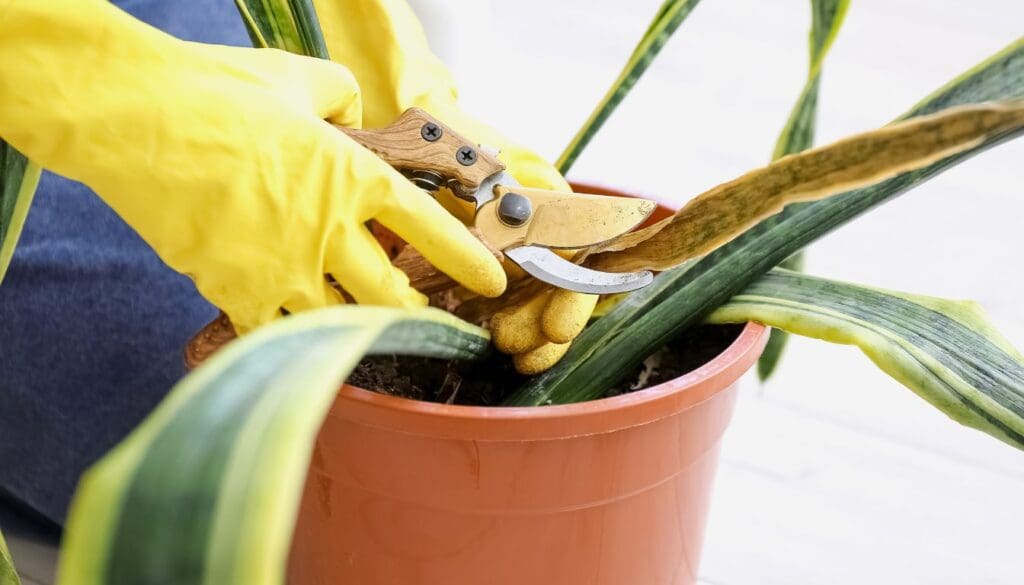
I always take a minute to check for dead or damaged leaves before moving plants inside. These can attract pests or mold if left alone.
I use clean, sharp scissors or pruning shears to snip off any yellow, brown, or mushy leaves. Cutting close to the base works best.
When I prune away the bad stuff, my plants instantly look better. This step encourages fresh, healthy growth.
I try not to take more than a third of the leaves at once. Too much pruning can stress the plant.
I keep a small bag nearby for clippings. It makes cleanup less of a chore and keeps things tidy.
It feels good to give my plants a fresh start before they move inside. Healthy, clean plants just handle the change better.
Sometimes I spot tiny bugs or webs while pruning. I definitely don’t ignore those—pests can spread fast indoors.
If I see problems, I treat them before bringing the plant in. I also wash my hands and tools after each plant to avoid spreading anything.
I look each plant over carefully, even the healthy-looking ones. Sometimes a few bad leaves are hiding underneath.
It’s a small step, but it really pays off. My plants always seem happier all winter.
5) Clean pots and containers
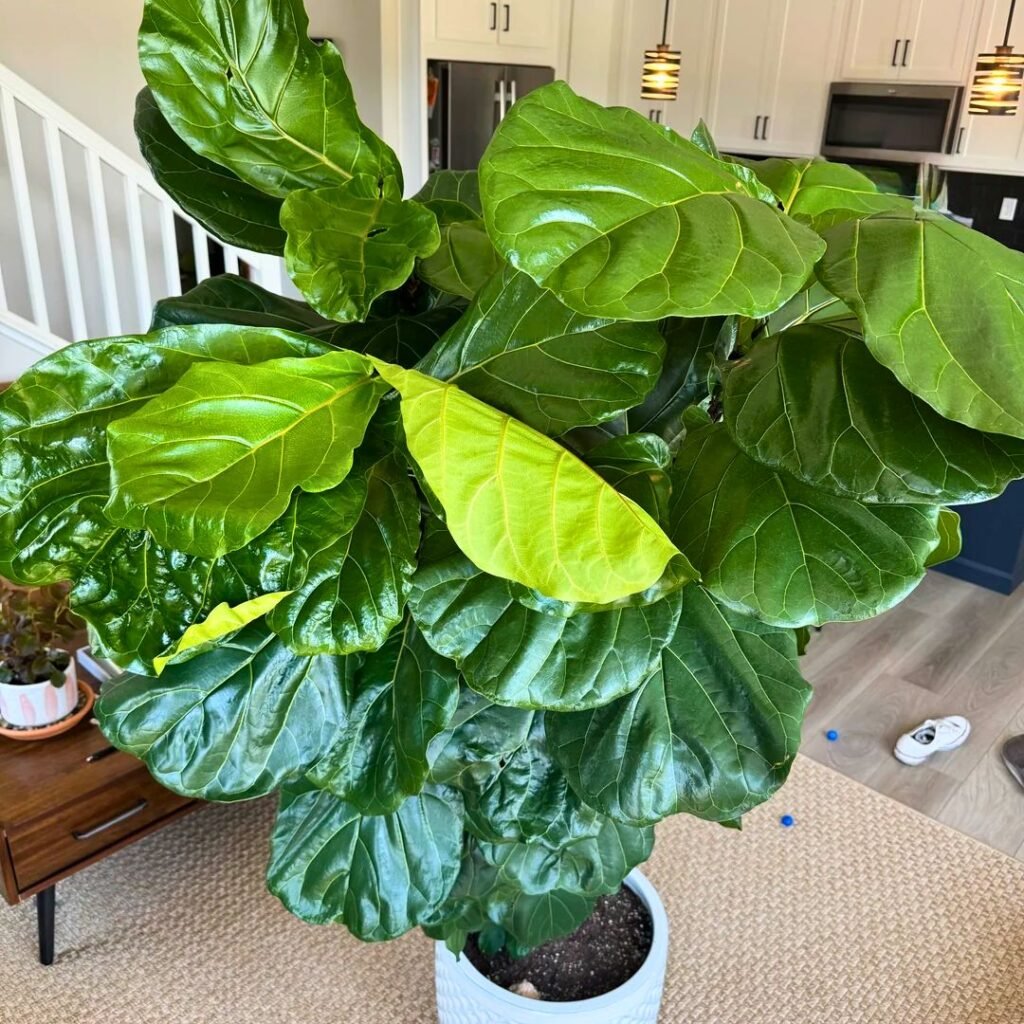
Before I bring my plants inside, I always clean their pots and containers. It keeps hidden bugs and diseases out of my home.
I take each pot outside and brush off any dirt or old leaves. Washing with warm, soapy water usually does the trick.
For stubborn spots or white residue, I mix one part vinegar with three parts water. That helps get rid of mineral build-up.
I check the bottom and inside edges—pests love to hide there. I rinse every pot really well so no soap or vinegar is left behind.
If a pot’s super dirty, I let it soak in the cleaning mix. Makes scrubbing a lot easier.
I always wait until pots are totally dry before bringing them in. It helps stop mold and mildew from starting.
Plastic, ceramic, clay—I clean them all. Even if they look clean, I don’t skip any.
A little effort here means fewer pests and happier plants indoors. Clean pots really do make a difference through winter.
6) Choose a bright indoor location

When I move my patio plants inside, I look for a spot with lots of light. Most plants just love sunlight.
South-facing windows are my go-to. They get the most daylight in my house.
If that’s not an option, I try an east or west window. Those work well for a lot of plants too.
I make sure nothing big is blocking the windows. Sometimes I’ll move a plant stand or table right up to the glass.
Some plants can get sunburned if the light is too intense. For those, I use sheer curtains to soften things up.
This helps protect my plants from too much sun. If a room is too dark, I’ll add a grow light.
These lights help plants get what they need. I set a timer and let it do its thing.
I rotate my plants every week or so. That way, all sides get some love and grow nice and straight.
By finding a bright spot indoors, I help my plants adjust to the change. It really keeps their leaves healthy all season.
7) Use a humidity tray to maintain moisture
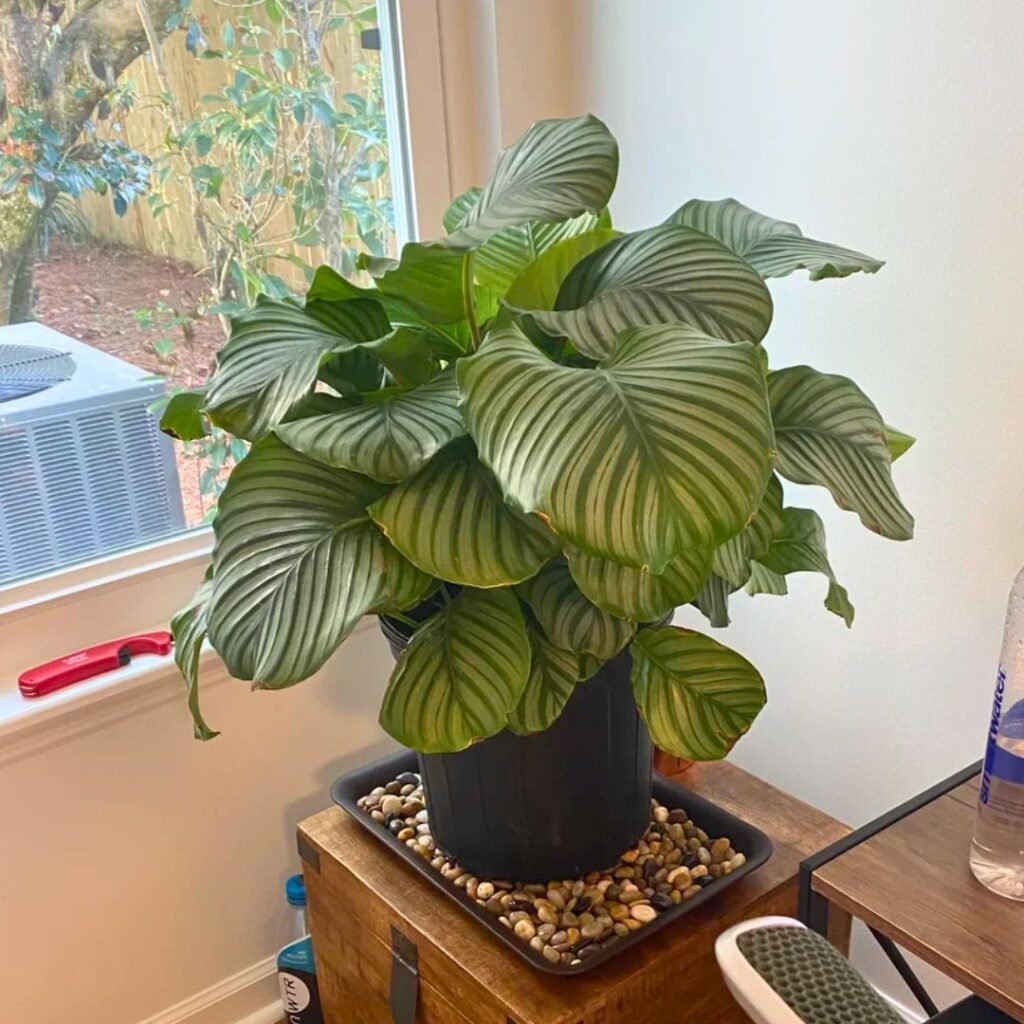
When my patio plants come inside, I notice the air dries out fast. Indoor heating just makes it worse—leaves start to curl or dry up.
Using a humidity tray is my go-to trick for keeping plants happy. It’s simple and takes almost no effort.
A humidity tray is just a shallow tray with water and small stones. I set my plant pots on top of the stones, making sure they aren’t sitting in the water.
This lets water evaporate around the plants and boosts humidity. The extra moisture keeps leaves green and stops those brown edges.
I find it especially helpful for ferns, peace lilies, and tropical plants that love humidity.
It’s easy to refill the tray when the water gets low. I check it every few days so it doesn’t dry out.
When I use a humidity tray, I don’t have to mist as often. I’ll use a store-bought tray or just grab a shallow dish from the kitchen.
The stones help keep pots steady and make sure roots don’t sit in water, which can cause rot. Maintaining moisture this way keeps my plants looking fresh and healthy all winter.
It’s such a small step, but honestly, it makes a huge difference for my indoor garden.
8) Transition plants during early morning or late afternoon

I try to bring my patio plants inside during the early morning or late afternoon. Those times are cooler and less sunny, so my plants don’t get as stressed out.
Moving plants at midday? I avoid it. The sun’s too strong, and the heat can dry them out or even cause wilting.
I’ve noticed the air is often a bit more humid in the morning or late in the day. That extra moisture helps keep my plants’ leaves from drying out as I move them.
Gentle light changes are easier on plants. If I move them during low-light hours, the transition doesn’t feel as abrupt to them.
When I carry my plants in, I check for any signs of stress. If they wilt or start dropping leaves, I know I need to tweak my timing—maybe even move them earlier or later.
I always check the weather before moving plants. If it’s going to be especially hot or the sun looks intense, I pick the coolest, shadiest time I can.
Protecting my plants from shock is key. Morning and evening are much less extreme, so the move from outdoors to indoors isn’t such a jolt for them.
Honestly, bringing plants in during these times is just nicer for me too. No rushing in the heat, and my plants get the careful handling they deserve.
9) Repot if roots are crowded

When I bring patio plants inside, I always check their roots. If I see roots tightly packed or circling the bottom, it’s time for a change. Crowded roots make it tough for plants to get water and nutrients.
I tip the plant out and look at the roots. If they’re tangled or poking out of the drainage holes, I know it’s time to repot. I use my fingers to gently loosen them before moving the plant.
I pick a new pot that’s just 1–2 inches bigger than the old one. Too big, and it holds too much water—not great for most plants. I use fresh, good-quality potting soil to give them a good start.
When I move the plant, I make sure it sits at the same depth as before. I press the soil gently around the roots and add more until the plant feels steady. A good drink of water and some drainage, and that’s it.
If I spot damaged or dead roots, I trim them off. That way, the plant can focus on growing healthy new roots. Repotting gives it more space and helps with the move indoors.
Making sure roots aren’t crowded is such a simple thing, but it really keeps my plants happy as they come inside.
10) Avoid sudden temperature changes

I try to keep my patio plants happy by protecting them from sudden temperature swings. Moving plants straight from warm outdoors to a much cooler inside can really shock them. That shock can mean leaves dropping or even browning.
To help them adjust, I only bring them in when indoor and outdoor temps are pretty close. If there’s a big gap, I’ll move them in for a few hours at a time before making it permanent.
Gradual changes help reduce stress. I keep an eye on the weather before I move anything.
Sometimes I’ll set the plants near a window or in a room that’s a little warmer at first. That way, they get a gentler transition.
I avoid drafty doors or heaters—those spots have wild temperature swings. I pick a stable area in my home instead.
If nights get chilly, I’ll start moving my plants in for the night and back out during the day for a few days. It helps the change feel less sudden.
I watch for stress signs like wilting or slow growth. If I see those, I know to slow down the process.
Taking small steps means healthier plants as they settle in. Sudden temperature changes can be rough on them.
A little planning and patience really help my patio plants adjust to life indoors.
Understanding the Challenges of Transitioning Patio Plants
Bringing my patio plants inside isn’t as simple as just moving pots around. Plants can react pretty strongly to changes in light, humidity, and temperature, and honestly, it can stress them out.
Common Stress Factors for Plants
Moving plants indoors can cause leaf drop, yellowing, or even stunted growth. Usually, it’s because of a sudden change in conditions—like not enough light or a temperature shift that’s just too quick.
Pests are another headache. Sometimes bugs sneak in with my plants, and if I’m not careful, they’ll spread inside my home. Lower humidity indoors is tough for a lot of plants, especially tropical types that love moist air.
Quick changes can throw a plant off. If I suddenly stop watering as much or move a plant near a drafty window, it might struggle to adjust. I try to keep their routine steady, but life happens, right?
How Indoor Environments Differ
Indoors, the light is way weaker than outside. I have to keep plants near a bright window or sometimes use a grow light. The outdoor sun is direct, but inside, not much light actually reaches the leaves.
The air inside is usually drier, especially when the heat or AC is on. Most homes don’t offer the steady moisture patio plants like. Sometimes I use a tray with water and rocks or try misting leaves.
Temperature changes more indoors than you’d think. Drafts from windows and doors or blasts of heat from vents can bother sensitive plants. I pay attention to room temp and pick the best spot where light and comfort line up.
Creating a Cozy Indoor Environment
Bringing my patio plants inside can be a challenge if I’m not careful. I have to make sure they get enough light and the right humidity to stay healthy all season.
Adapting Lighting for Patio Plants
When I move plants indoors, I notice sunlight just isn’t as strong as it was outside. To help, I put my sun-loving plants near south-facing windows. If sunlight’s lacking, I use grow lights about 6-12 inches above the plants. Keeping a lamp on for 12-16 hours each day does a decent job of mimicking the sun.
For plants that need less light, I use sheer curtains to filter harsh sunlight and prevent leaf burn. I turn my pots every few days so all sides get their share of light. Here’s a simple table I use to remember plant light needs:
| Plant Type | Light Needed | Placement Suggestion |
|---|---|---|
| Succulents | Bright, direct | South window |
| Ferns | Indirect, low | East/North window |
| Orchids | Filtered, bright | Near sheer-curtained window |
Managing Indoor Humidity Levels
Many patio plants love humid air and suffer in dry rooms. I check humidity with a meter. If the air’s dry, I group my plants together to make a tiny, more humid microclimate.
Sometimes I put a shallow tray of water with pebbles under my pots for extra moisture. Regular misting helps, but I’m careful not to overdo it—too much water means moldy leaves. For tropical plants, I use a small room humidifier in winter. If I see brown tips, I know the air’s too dry and I bump up the humidity.
I never put plants near heating vents, radiators, or drafty windows. Those spots dry out leaves in no time.
Frequently Asked Questions
I always check for pests, watch the weather, and clean my pots before moving plants indoors. It’s important each plant gets enough light and doesn’t get too cold or dry.
How can I acclimate my patio plants to indoor conditions?
I start by moving plants into the shade outside for a few days, so they get used to less light. Then, I bring them inside for longer stretches each day until they’re used to being indoors. It really helps prevent shock and leaf drop.
What is the best way to inspect and treat plants for pests before moving them inside?
I check every leaf and stem for bugs or sticky spots. I wash leaves with soapy water and trim off any dead or damaged bits. Cleaning plants and pots helps cut down on pest problems inside.
Can all types of outdoor plants be brought indoors for the colder months?
Some plants, like tropicals, handle indoor life just fine. But plants that need lots of sun or cooler temps might struggle. I always check each plant’s needs before bringing it in.
When is the ideal time to transition my outdoor plants back inside?
I bring my plants in before the first frost. Watching the weather helps me avoid any surprise cold snaps.
What type of homemade solutions are effective for treating plants before bringing them indoors?
A mix of mild dish soap and water works for many pests. Sometimes I use a spray with neem oil for tougher bugs. I always test a small spot first to make sure my plant isn’t sensitive.
Are there any specific temperature or light considerations when relocating patio plants inside?
I usually set my plants close to windows, making sure they get lots of bright but indirect sunlight. You don’t want them sitting right next to a cold draft or huddled by a heater, trust me.
Most indoor plants seem happiest somewhere between 60 and 75°F. It’s a pretty comfortable range for everyone, honestly.
Recommended Garden Supplies
| Product Image | Our Recommended Gardening Supplies | Check Offers! |
|---|---|---|
Top Top
Top
Top
Top
Top
Top
Top
Top | rePotme Houseplant and Tropical Classic Potting Soil Mix | Check Offer On Amazon |
 Top
Top
Top
Top
Top
Top
Top
Top | Espoma Organic Indoor Plant Food | Check Offer On Amazon |
 Top
Top
Top
Top
Top
Top
Top
Top | GooingTop LED Grow Light 6000K Full Spectrum Clip Plant Growing Lamp | Check Offer On Amazon |
 Top
Top
Top
Top
Top
Top
Top
Top | Soil Moisture Meter | Check Offer On Amazon |
 Top
Top
Top
Top
Top
Top
Top
Top | Govee Hygrometer Thermometer, Bluetooth Enabled! | Check Offer On Amazon |
 Top
Top | LEVOIT Humidifiers for Large Room(Best For Plants) | Check Offer On Amazon |
 Top
Top
Top
Top
Top
Top
Top
Top | Upgraded DIY Automatic Drip Irrigation Kit, 15 Potted Houseplants Support | Check Offer On Amazon |
 Top
Top
Top
Top
Top
Top
Top
Top | Stainless Steel Heavy Duty Gardening Tool Set | Check Offer On Amazon |
 Top
Top
Top
Top
Top
Top
Top
Top | Bonide Insecticidal Soap | Check Offer On Amazon |
 Top
Top
Top
Top
Top
Top
Top
Top | Bonide 32 oz Spray Neem Oil for Organic Gardening | Check Offer On Amazon |
 Top
Top
Top
Top
Top
Top
Top
Top | Garden Safe Fungicide | Check Offer On Amazon |


